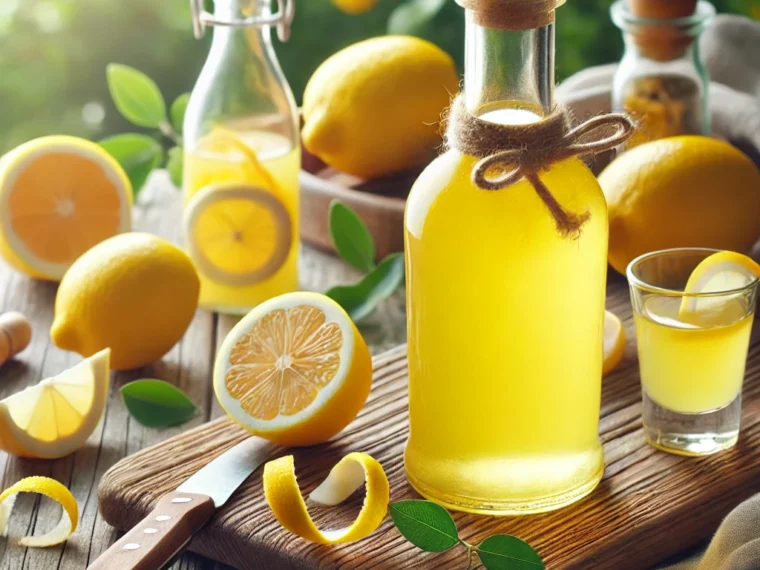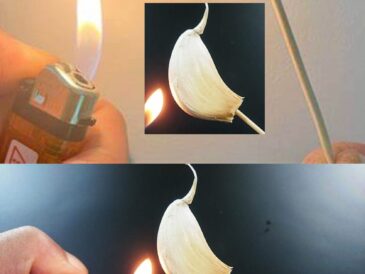1. Prepare the Lemons
- Wash the lemons thoroughly with warm water to remove dirt and any wax.
- Use a vegetable peeler or microplane to remove the zest. Avoid the white pith, as it adds bitterness.
2. Infuse the Alcohol
- Place the lemon zest in a large glass jar with a tight seal.
- Pour in the alcohol, ensuring the zest is fully submerged.
- Seal the jar and store it in a cool, dark place for at least 7–10 days (up to 30 days for a stronger flavor). Shake the jar gently every day to encourage infusion.
3. Make the Simple Syrup
- Combine water and sugar in a saucepan over medium heat. Stir until the sugar dissolves completely.
- Let the syrup cool to room temperature.
4. Combine and Rest
- Strain the infused alcohol through a fine-mesh sieve or cheesecloth into a clean container to remove the zest.
- Slowly mix the simple syrup into the alcohol, tasting as you go to adjust sweetness.
5. Age the Limoncello
- Pour the mixture into bottles and seal tightly.
- Let the limoncello rest for at least 1–2 weeks in the refrigerator or freezer to allow flavors to meld.
The #1 Mistake to Avoid: Leaving the Pith
The biggest mistake when making limoncello is including the white pith of the lemon peel. The pith is bitter and can overpower the bright, citrusy flavor of the zest, leaving your limoncello with an unpleasant aftertaste. Be meticulous when zesting to avoid this common pitfall.
Tips for Perfect Limoncello
- Use Organic Lemons: They’re free of wax and pesticides that can alter the taste.
- Choose High-Proof Alcohol: It extracts flavors better and yields a smoother liqueur.
- Adjust Sweetness: Add simple syrup gradually to customize the sweetness.
- Strain Thoroughly: Ensure no zest particles remain in the final product.
- Patience is Key: Allow ample time for infusion and aging to achieve depth of flavor.
Serving and Storing Limoncello
- Serve Chilled: Keep limoncello in the freezer for an icy, refreshing drink.
- Pairing: Enjoy it with desserts like panna cotta, tiramisu, or biscotti.
- Shelf Life: Properly sealed, it can last up to a year in the freezer.
Creative Uses for Limoncello
- Cocktails: Mix with sparkling water, Prosecco, or gin for a vibrant cocktail.
- Desserts: Drizzle over ice cream, cakes, or fruit salad.
- Cooking: Use as a glaze for chicken or in marinades for seafood.
Conclusion
Making limoncello at home is a rewarding process that captures the essence of sunny lemons in a bottle. By following this guide and avoiding the pithy mistake, you’ll create a smooth, vibrant liqueur that’s perfect for sipping and sharing. Whether enjoyed as an after-dinner treat or used in culinary creations, homemade limoncello is a testament to the beauty of simplicity and patience.
FAQs
1. Can I use regular supermarket lemons for limoncello?
Yes, but ensure you wash them thoroughly to remove wax or residue. Organic lemons are ideal for the best flavor.
2. How long does limoncello need to infuse?
Infusion typically takes 7–10 days, but longer periods (up to 30 days) result in a more intense flavor.
3. Can I make limoncello with vodka instead of grain alcohol?
Absolutely! While grain alcohol provides a stronger base, vodka works well and is more accessible.
4. Why does my limoncello taste bitter?
Bitterness usually comes from the white pith of the lemon peel. Always zest carefully to avoid it.
5. Is limoncello gluten-free?
Yes, if you use a gluten-free alcohol like pure grain alcohol or vodka, your limoncello will be gluten-free.




